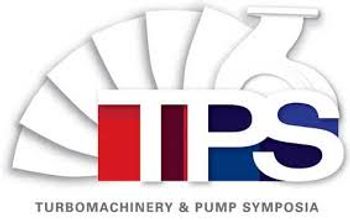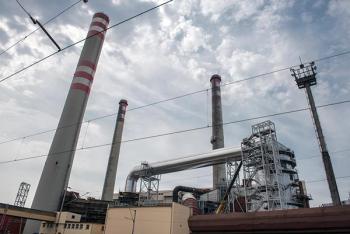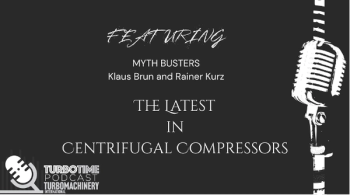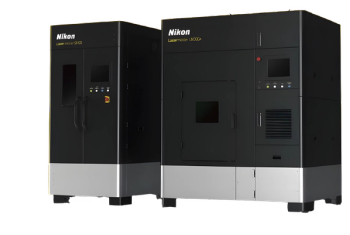
Combined cycles: Now at 62%, next 65%
After the pipelines came the market for the gas turbine for the petrochemical and refinery industries mostly located in the gulf coast region of the US. The GE Houston office sold a number of gas turbines to these two industries. From 1950 to 1960 units were sold to Union Carbide, Texas City and Puerto Rico, Humble Oil at Baytown, American Oil at Texas City, Tenneco Chemical at the Houston Ship Channel and Gates Rubber in Oklahoma City. All of these units were for mechanical drive service. There was a single frame size 5 generator set sold to Shell Oil near the Ship Channel.
(This is the second and final part of the series. Read the first part
The American Oil order was important because a Frame 5 12,000 HP single shaft unit had a 13,000 HP booster extraction condensing steam turbine coupled to the gas turbine to drive a 25,000 HP Elliot air compressor to feed a fluid cat cracker. The exit of the cracker fed a large Combustion Engineering CO boiler. I worked out the details of this boiler for American Oil using input from Combustion Engineering and I also came up with the the booster steam turbine idea. This was the largest air compressor for this service at the time. A second Frame 5 gas turbine also drove a process gas compressor in the new cracking plant. This booster concept is now used for many single unit combined cycle plants. GE presented me with a big “Breakthrough 1960” award for this application and sales work and gave me the first Hamilton solid gold case electric wrist watch with my name engraved on the back which I still have but not working. It was not reliable and was dropped by Hamilton.
Here Come The Jets
About 1958 one of the gas companies, Columbia Gulf, decided to install a Pratt and Whitney GG4 jet with a Cooper Bessemer power turbine package in a transcontinental pipeline. The unit ran fairly well and more orders followed. After a few years Columbia Gulf switched to the Rolls Royce Avon Jet engine.. This engine proved to be a winner and a number more units were purchased not only from Columbia Gulf but also from Trans Canada Pipelines. Later on these pipeline companies used the larger GE LM 2500 and the R R RB 211 to pump gas.
This positive experience then opened the door in the 1960s for aeroderivative peakers by the dozens to be purchase by the electric utility companies following many heavy duty units from GE and W. The unties became short of power because of the use of home air conditioners. They had not properly planned for this surge in use of power. First it was Pratt and Whitney with their GG4 packages and it was Curtis Wright with the Rolls Royce large Olympus. The electric utility companies did not particularly like the jet engines but they had no other choice. This market in a few years became saturated and then it was back to selling the heavy duty units for base load service by GE and W.
Gas Turbines for Electric Utilities Stumbling in the Dark
In the meantime the electric utilities were asking for much larger gas turbines and neither GE or Westinghouse would not or could not offer them larger units. GE and Westinghouse seemed to be floundering around not knowing what to do for the electric utility market in terms of gas turbine size or application. They seemed to be wondering around and stumbling in the dark. The combined cycle was going no where. Both companies did not understand the relationship of compression ratio, firing temperature and exhaust temperature. The fully fired exhaust boiler only provided a modest improvement of about 4 % efficiency gain. The power ratio between the steam turbine and gas turbine was greatly in favor of the steam turbine. The gas turbine was only a wart on the back of the steam turbine hog. The electric utilities thought the small size was not worth bothering with for the small gain in efficiency when gas was selling for about 20 cents a million BTU.
GE spent a lot of money on the the supercharged boiler patterned after the old BBC Velox boiler and Bechtel made a costly full design of such an arrangement for GE but the electric utility industry was not interested. Westinghouse offered a massive steam injection cycle but the utility companies thought such a machine would fog up the whole country side according to what Jim Stevens, chief engineer for Westinghouse gas turbines at the time, told me years later. But all of this groping, ignorance of the DCC cycle thermodynamics and not knowing what to do was about to soon change.
Dow Chemical Company
There were two potential industrial areas the could possibly apply the gas turbine. The first was the paper industry that historically generated all of its electricity. However the large extraction condensing steam turbine filled their needs very well and the gas turbine was out of luck here. However, GE did manage to sell one small 3500 KW unit to a paper mill near Houston. Its exhaust heat generated low pressure steam for the plant. The second area was the chemical industry that uses lots of electricity.
Dow Chemical Company generated all of its own electrical power at its home plant and at its large Freeport, Texas plant. Dow liked the GE large extraction condensing steam turbines and had a number of them. Studies by Dow in 1963 showed that the gas turbine generators offered an improvement in its overall plant efficiency. Therefore, in 1963 -64 Dow approached GE to see if GE would make them a larger gas turbine than GE's old two shaft 20 MW unit that was considered to be unreliable and a dog because of an internal bearing oil leak GE was unable to fix . GE persisted trying sell the unreliable two shaft machine. Jack Turner who was in charge of Dow's power generation at Freeport finally gave up and turned to Westinghouse (W) to see if W could help Dow purchase large and reliable gas turbine generator units. Dow wanted to buy several of them.
Westinghouse saw a great opportunity to at last crack the GE/ Dow monopoly and sell electric generator sets to Dow and crack it W did. Dow met with W and W offered the 25 MW 301 unit to Dow and promised to have a much larger 501 40 MW unit for Dow in a couple of years. Dow in 1964 placed an order on W for the first 25 WW 301 GT generator set in 1964. Dow followed with 3 more 301s and then when the 501 became available Dow ordered 5 of the larger machines making a total of 9 large units. Each unit exhausted to a fully fired high pressure steam boiler. Each GT was supercharged with an electric motor driven forced draft fan delivering 20 inches of water pressure. The air was then cooled by water spray before entering the gas turbine to obtain more net power. The idea of this scheme was proposed by a young English Bechtel engineer whose name was Richard (Dick) Fosterpeg. Bechtel had the contract with Dow to install the gas turbines.
How well did the FD fan supercharging work? It worked fairly well but years later Jim Stevens who was chief engineer for W gas turbines told me that the scheme was not all it was cracked up to be. He told me that the FD fan was not as efficient as quoted by the fan company even with a well designed exit diffuser. Also Jim said that Fosterpeg used the psycrometric chart to calculate the water spray cooling and should have used the steam tables. At the added pressure this calculating procedure gave an unfavorable distorted answer. This scheme was dropped in a few years.
Salt Grass Combined Cycle Power Plant
There is more to the W/Dow GT story. Two W sales engineers whose names were Al Smith and Tom McMichael left the Houston Westinghouse sales office early in 1969 to form a new company called Power Systems Engineering (PSE) . They did this to design and build a 300 MW CC power plant near the Freeport Dow plant to furnish dedicated power to Dow. The plant was named The Salt
Grass Combined Cycle Power Plant. They purchased 4 W 501 gas turbine and 4 HRSGs. No export steam was to go to Dow. A W condensing steam turbines was connect to each gas turbine. The modern day CC was about to emerge. In a practical sense, three more large gas turbines were added to the Dow GT list making a total of 13 units because all the electric power was dedicated to Dow. Later on Dow purchased the plant.
As a point of interest, the new PSE office was located next to our new Deltex De Laval office and I occasionally talked with Al and Tom as I knew them both. They in late 1969 offered me a job and a piece of the action if I would join their new company. Having just joined Deltec I did not accept their offer. They both became wealthy with their new company and so would I have if I had joined them.
Birth of the Modern Day Combined Cycle
Dick Fosterpeg in late 1965 or early 66 left Bechtel and joined W in Philadelphia as part of the W GT thermodynamics team. He then made a comprehensive study of the combined cycle. He found that the maximum CC efficiency was obtained when the HRSG was not supplementary fired. When supplementary firing was added immediately there was introduced a penalty of about 5 inches of water back pressure added reducing the gas turbine output. Also more steam was generated to add more steam turbine power a lower efficiency. He used a standard W 2400 psig 1000/1000 degree F steam turbine as a reference.
There was also another important point that came out of Dick's study. He concluded that the GT exhaust should be at least 1050 degrees F and preferably 1100 to achieve the maximum 1000/1000 degree F throttle and reheat steam temperatures and a maximum stream turbine efficiency. In order for this desired exhaust temperature to be obtained there must be the right relationship of the GT compression ratio and the firing temperature.
Over the years, prior to Dick's study, the design of the industrial gas turbine was based primarily on cost and GT output and not on the efficiency of the combined cycle. On the other hand, the jet engine family of GTs from the beginning was based on weight and maximum efficiency as there was no CC involved. As higher firing temperatures were made available then the GT compression ratios were increased to obtain maximum efficiency.
Therefore the aero engines have lower exhaust temperatures and higher compression ratios and their CC efficiencies are lower. Today at the elevated firing temperatures the compression ratios are now upwards of 50 whereas the compression ratios of all the large industrial gas turbines are about the same being 23 to 24 as they all have about the same firing temperatures and are all targeting the desired 1100 exhaust temperature for maximum combined cycle efficiency. However, there is one exception and that is the reheat gas turbine where the compression ratio is now about 36 and the exhaust temperature is about 1200 degrees F.
Dick also stated that the the stack temperature should be a low 300 degrees F at the time the limit to prevent excessive acid corrosion in the economizer/stack gas cooler. To obtain this low of a HRSG exit temperature a multiple drum multiple pressure HRSG had to to be used and an admission steam turbine was also necessary to expand the extra steam. This is the same waste heat boiler and steam turbine scheme I invented way back in 1955. Dick said to obtain the lowest possible back pressure and therefor the lowest GT power loss extended surface boiler tubes had to be incorporated in the HRSG design. A special HRSG therefor was necessary.
Dick had his findings published in a magazine with appropriate graphs and heat balances and it was not long before the GE GT thermodynamic expert in Schenectady, Leroy Thomlison, agreed with Dick and at last all the pieces of the CC puzzle were put together to obtain maximum CC efficiency. The modern day CC was at last clearly defined, specified and born. From then on it was upward and onward for the industrial gas turbine CCs and they rapidly grew in size and efficiency.
HRSG Suppliers
A special HRSG had to be obtained with multiple drums to get the 300 degree F stack and extended surface boiler tubes had to be applied to obtain a minimum back pressure on the gas turbine. The throttle pressure had to be 2400 psig with 1000/1000 degree temperatures. The major boiler manufacturers such as Babcock and Wilcox and Combustion Engineering were not interested in making this special boiler. However, a lesser know boiler company, Henry Vogt, grabbed the opportunity and agreed to make such a special boiler for the newly defined CC. Later on other companies started to offer this special HRSG.
Overview of the CC Evolution
The CC took many twists and turns to become the backbone of today's CC. First it was BBC who in 1935 and then in 1939 developed the Houdry units and then the first stand alone 4000 KW gas turbine. Then Whittle and Ohain developed the jets during WWII for airplanes. After the war GE took the lead with the industrial gas turbines through the units for the UP railroad and the pipeline pumpers followed by GTs for the petrochem and refinery plants. It was Glenn Warren and Bruce Buckland who held the rains. Westinghouse also started making heavy duty gas turbines.
W and GE stumbled around for several years with the CC development when in the 1960s W grabbed the ball with a suitable large gas turbine for the utility companies when it came out with the 25 MW 301 and then the 501 40 MW units. The 501 rapidly rose to 60, 80, 100 and then 120 MW in size. The leaders in this effort were Jim Stevens and Augy Scalzo, chief engineers for W. I helped re design the first l00 MW 501 D gas turbines in 1980 in Saudi l Arabia. Saudi had purchased 19 of these “Big Hummers”, as Aramco called them. This unit had many problem that had to be fixed and I helped W solve them as a consultant for Saudi Arabia (Aramco).
GE built a new independent manufacturing plant in Greenville, South Carolina to build gas turbines. A few years later W built a similar plant in Round Rock, Texas near Austin. This plant depended on the Philadelphia plant for parts. The market for gas turbines suddenly went to plot and W had to abandon this plant. W lost a lot of money in the process and also GT market share. This happening was the start of W's down fall and subsequent sale to Siemens of Germany. However, MHI of Japan continued with the development of the W large gas turbines and is today one of the leaders in gas turbines. MHI got a big boost when the Japanese Government sponsored the ill fated reheat GT which led to MHI's success when it carried on further GT R and D and the W designs.
GE finally came out with the new 7F gas turbine rated 150 MW in the 1990s and was then back in the game. They had built a few closed cycle steam cooled units, the first under a DOE contract. The number one was a frame 9 that went to England. The others, Frame 7s, went to California. All of these units were too complicated getting the steam in and back out of the rotating blades and GE dropped this design. They had a combined cycle efficiency of just shy of 60%.
ABB of Switzerland saw the wisdom of the Fosterpeg/W disclosure and designed their GT24 and GT26 reheat gas turbines, the first one a GT24 being installed in the US. ABB challenged GE, W and MHI with these high exhaust temperature units and a number of them were sold world wide. The ABB reheat gas turbine was patterned after my patents on the reheat GT. Freddy Haeusermann, head of the project, rewarded me monetarily for my effort in Baden before the turbine was announced. These gas turbines are still being made today by the Italian company Ansalado Energia of Switzerland.
In reviewing all the history of the combined cycle, I would have say that Westinghouse was the overall CC leader because of the Fosterpeg disclosures, the Dow sponsored Salt Grass CC and when W started building the larger 301 and 501 units for the utility companies. When W went out of the jet engine business it hurt them by loosing spin off from government jet development money. Today GE is now the leader with its new air cooled frame 7 and 9s with CC efficiencies of over 62 %.
Conclusion
The story above has traced the coming about of the modern day steam and gas turbine combined cycle. It took about 70 years of development and understanding of the CC to get to where we are today. Many dedicated engineers were involved. There were many ups and downs, starts and stops and forward movements along the way.
There is still room for the CC to grow with the advent of the new CMC materials about to make a jump forward for the CC possible. We have seen the development of better blade cooling and better materials and processes such as directional solidification, single crystal blades, thermal barrier coatings (TBC)s and now ceramic matrix composites (CMC)s developed for the gas turbine to bring about the CC as we know it today. Soon CC efficiencies will be over 65 %.
Newsletter
Power your knowledge with the latest in turbine technology, engineering advances, and energy solutions—subscribe to Turbomachinery International today.





